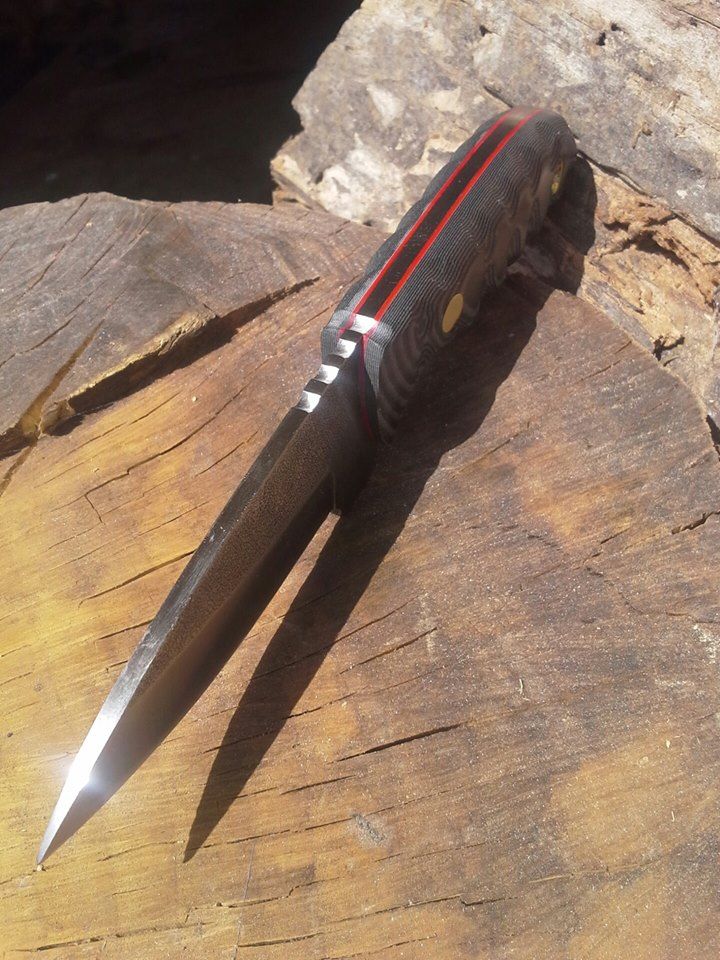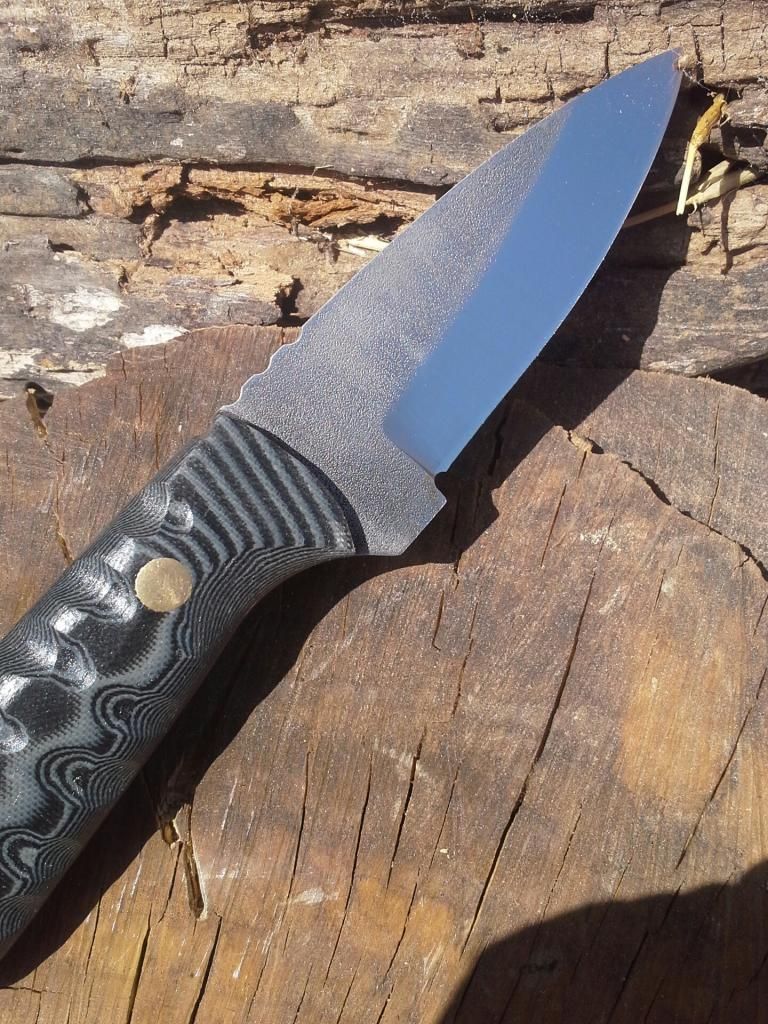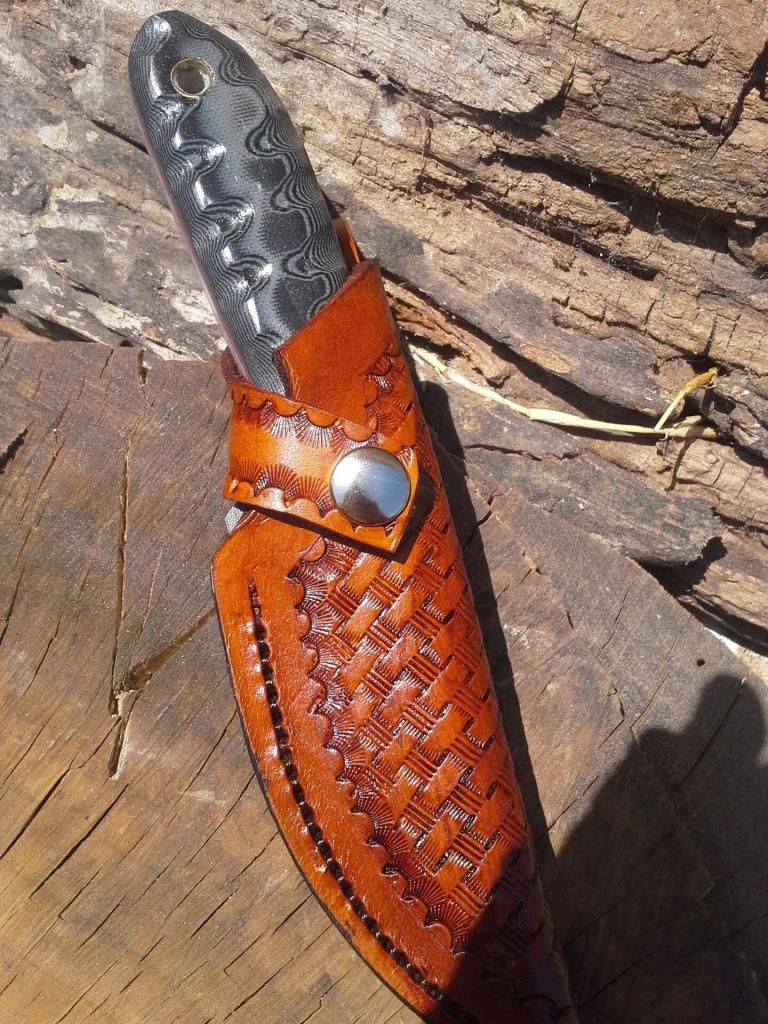Drop Point Hunter
1084 carbon steel tempered to 58rc 5/32 thick. 7 3/4 OAL the blade is 3 1/4 with my textured finish, thumb jimping on the spine. The handle is black and gray G-10 with Red liners and the scales are fastened with one 5/16 brass corby bolt, and ¼ in flared brass tube making the tube also a mechanical fastener. I don’t like to use pins, they are subject to fail as a mechanical faster is there forever. Handmade leather sheath with tooling. It is razor sharp.




1084 carbon steel tempered to 58rc 5/32 thick. 7 3/4 OAL the blade is 3 1/4 with my textured finish, thumb jimping on the spine. The handle is black and gray G-10 with Red liners and the scales are fastened with one 5/16 brass corby bolt, and ¼ in flared brass tube making the tube also a mechanical fastener. I don’t like to use pins, they are subject to fail as a mechanical faster is there forever. Handmade leather sheath with tooling. It is razor sharp.




Comment